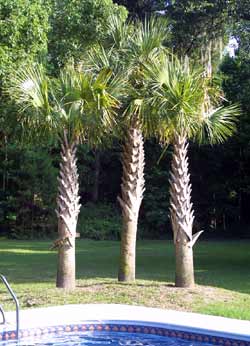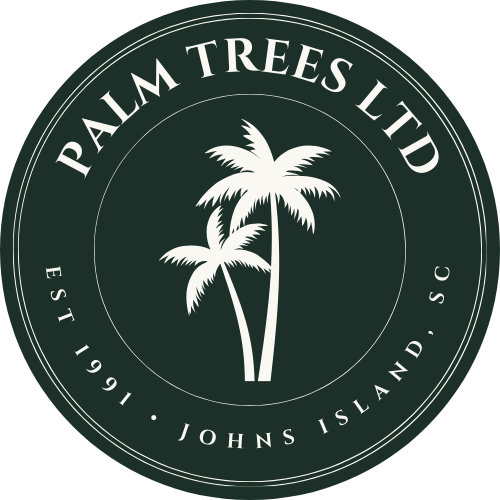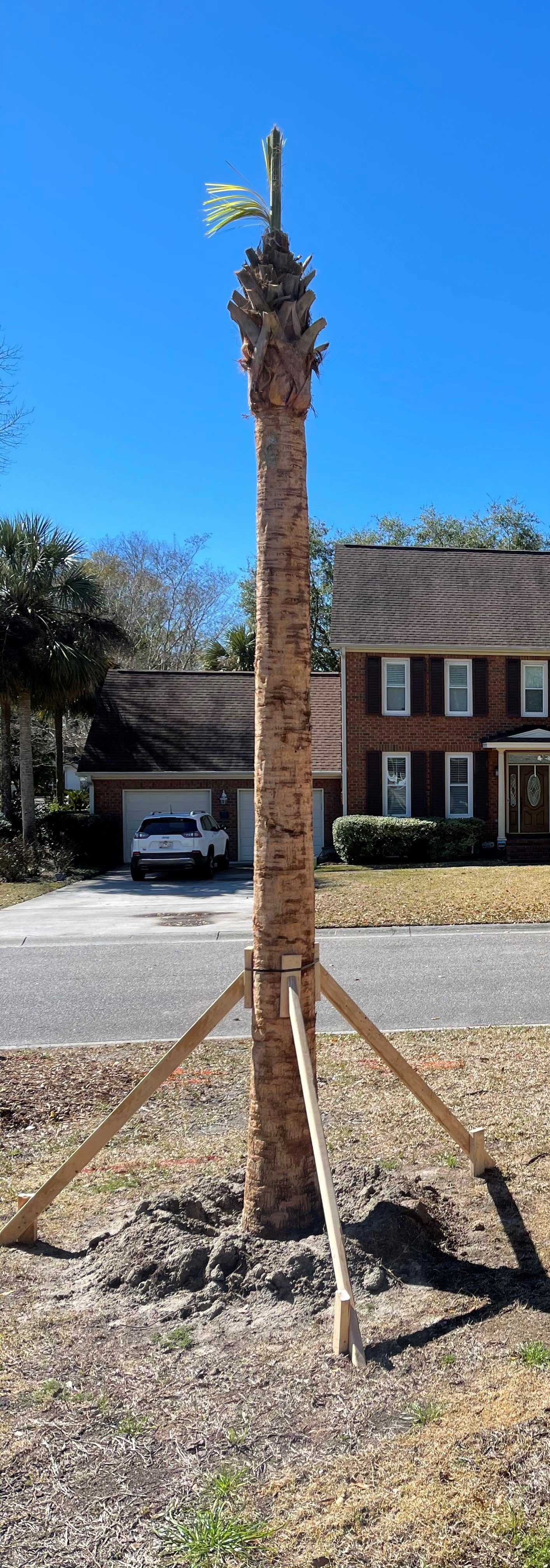


Palmetto Palm (Sabal palmetto)
This palm tree, commonly seen near the coast, has large, blue-green costaplamate leaves with a distinctive, large notch in the middle. Trees from southern Florida have larger, more elliptical leaves. The trunk is large (can be a foot and a half across) and wild palmettos retain old frond bases on their trunks in a crisscross pattern, typically called "boots". These are sometimes removed on cultivated plants.
Native habitat: Native to the southeastern coast from southern North Carolina to the northern panhandle of Florida. North of Florida, the native range of this palm is restricted to coastal areas that are subject to salt spray and storms. Native to inland areas of Florida peninsula, as well as the Bahamas.
Size: These trees can reach 30 - 40 feet in our area. Growth rate is usually moderate in our area.
Cold hardiness: Grows like a weed along the coast and is hardy throughout Zone 8, especially when planted in sandy soil. Needs a protected, warm site and/or special sheltering to survive in Zone 7 and north. Hardiness decreases with trunk height. Also, seedlings and small plants are susceptible to cold damage.
Culture: Plant in full sun to light shade. Does best on sandy soil with some limestone. Does best with ample water. Very tolerant of salt spray, flooding, fire, and hurricanes, but not to extreme cold. Scale can sometimes be a problem, especially on plants that have been transplanted. Transplanted Sabal palmettos need some special care to survive. First, every leaf should be removed from the plant. S. palmetto roots cannot grow back once they have been cut. New roots have to sprout from the trunk, once the palm has been transplanted. Removing the palm's leaves lessens the strain on its root system. No nails should be driven in the trunk, should bracing be required, since all wounds on palm trunks are permanent. Transplanted palms require conscientious watering and proper fertilization during their first growing season.
Landscape use: The best palm tree for southeastern coastal plantings, the Palmetto Palm is a symbol of the "sea islands" landscape. It has been used in all sorts of landscaper styles and situations. The Palmetto actually tends to have a loose, wild look that can make it look somewhat out of place in formal settings. Watering during dry spells, fertilizing, and pruning off dead leaves can sharpen its appearance up.


